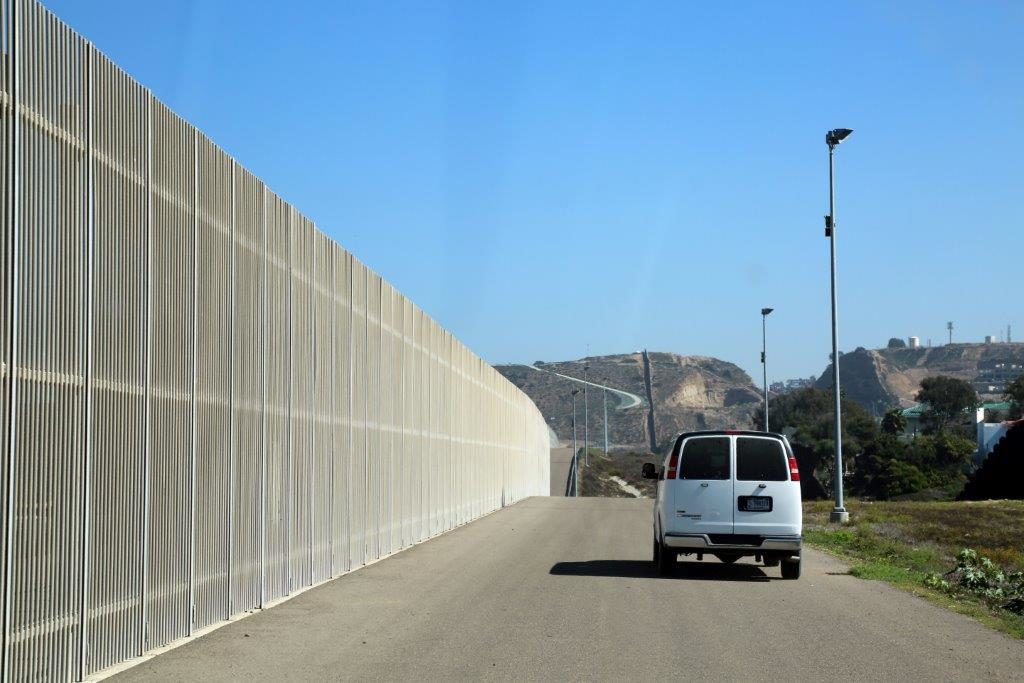The government currently cannot afford to pay for more than a small fraction of a physical barrier along the U.S.-Mexico border. President Donald Trump signed an executive order on January 25, 2017, directing the Department of Homeland Security (DHS) to “plan, design and construct a physical wall” or similarly “impassable physical barriers,” such as a fence, along the Southwest border. On February 20, DHS Secretary John Kelly issued a memorandum implementing the president’s executive order, directing the department to immediately start the construction of a wall. Yet, no tangible discussion of funding is included.
Although President Trump maintains authority under the Illegal Immigration Reform and Immigrant Responsibility Act (IIRIRA) of 1996 and the Secure Fence Act of 2006 to construct a physical barrier along the Southwest border, he does not have the ability to pay for a significant portion of the barrier’s construction. A recent internal DHS report to Secretary Kelly finds that constructing a physical barrier along 1,250 miles of the Southwest border will cost American taxpayers about $21.6 billion, though other estimates put the figure as high as $31.2 billion.
DHS has limited authority to use existing funds already appropriated by Congress to pay for constructing a barrier along the U.S.-Mexico border. Congress provided DHS with $447 million in the Consolidated Appropriations Act of 2016 to pay for border security fencing, infrastructure and technology, of which $274 million are available until September 30, 2017, and $173 million are available until September 30, 2018. However, DHS may have already expended or obligated a significant portion of this funding for other responsibilities and programs deemed essential to border security. For example, DHS must pay to maintain the 654 miles of fencing already in place along the Southwest border and for regular border security operations and acquiring technology.

A recent report from DHS to Congress states that DHS has only identified $20 million from this account to pay for the border wall. The report also projects that to build one mile of fencing will cost $9.3 million on average and one mile of wall will cost $17.8 million on average. The $20 million DHS has identified would pay for only two miles of fencing or one mile of a wall along the Southwest border. In the hypothetical situation that the reports were wrong and all $447 million were available to pay for the border wall, the funds would only cover 48 miles of fencing or 25 miles of wall.
The number of miles DHS can pay for immediately is only a tiny fraction of the Trump administration’s plan to construct 1,250 miles of physical barrier along the Southwest border. The recent internal DHS report to Secretary Kelly broke down the project into three phases. The first phase of the project, which consists of only 26 miles near major metropolitan areas in the border region, including El Paso and San Diego, will cost approximately $360 million. The first phase is the smallest by distance, as well as the cheapest and easiest to build of the three phases. The second phase is projected to consist of 151 miles through the Rio Grande Valley in Texas and along the Arizona border, including through private property, while the third phase will run along an as-yet-unidentified 1,080 miles of the border. DHS will need to identify or receive additional funding just to complete the first phase.
Another potential source of funding would be from money DHS can reprogram from other programs or activities or funding carried over as unobligated funds from past fiscal years. Under the Consolidated Appropriations Act of 2016, DHS cannot augment an existing program or activity by more than $5 million or 10 percent of the program or activity’s budget, whichever is less. In addition, the same act requires that not more than 5 percent of any appropriation made by Congress for DHS be reprogrammed, or taken away, from an account. And even though the House Committee on Appropriations noted in a 2015 committee report that Customs and Border Protection (CBP) has $360 million carried over from prior fiscal years, the same restrictions under the Consolidated Appropriations Act of 2016 apply to funds carried over from past fiscal years. All the while, DHS must notify the Senate and House Committees on Appropriations 15 days in advance of reprograming existing funds. In effect, DHS can only reprogram up to $5 million to pay for the border barrier after notifying Congress.
The Trump administration’s power to use existing funds already appropriated by Congress to pay for the border wall is very limited. Even if the administration could utilize all $447 million appropriated in the border security fencing, infrastructure and technology account and reprogram an additional $5 million, it would only pay for a mere 2.1 percent of the total cost. The lack of available funding requires the administration to ask Congress for the remaining $21.15 billion to build the wall. The Trump administration will likely begin by seeking a supplemental spending bill in 2017 to fund a physical barrier along the Southwest border, which will most likely become part of the larger spending bill that must be passed by April 29, 2017, to fund the government for the remaining five months of fiscal year 2017. Regardless of when the funding is requested, American taxpayers will be paying for the remaining 97.9 percent of the border wall. Congress should provide funding to build a fence in the Southwest border only where the use or placement of such a barrier is the most appropriate solution. For those areas DHS does not deem appropriate for fencing, DHS should attain operational control of the border areas through effective border security policies, including the use of modern technology, that are transparent, facilitate commerce and take into account the impact these policies have on the tens of millions of people who live along our borders.

